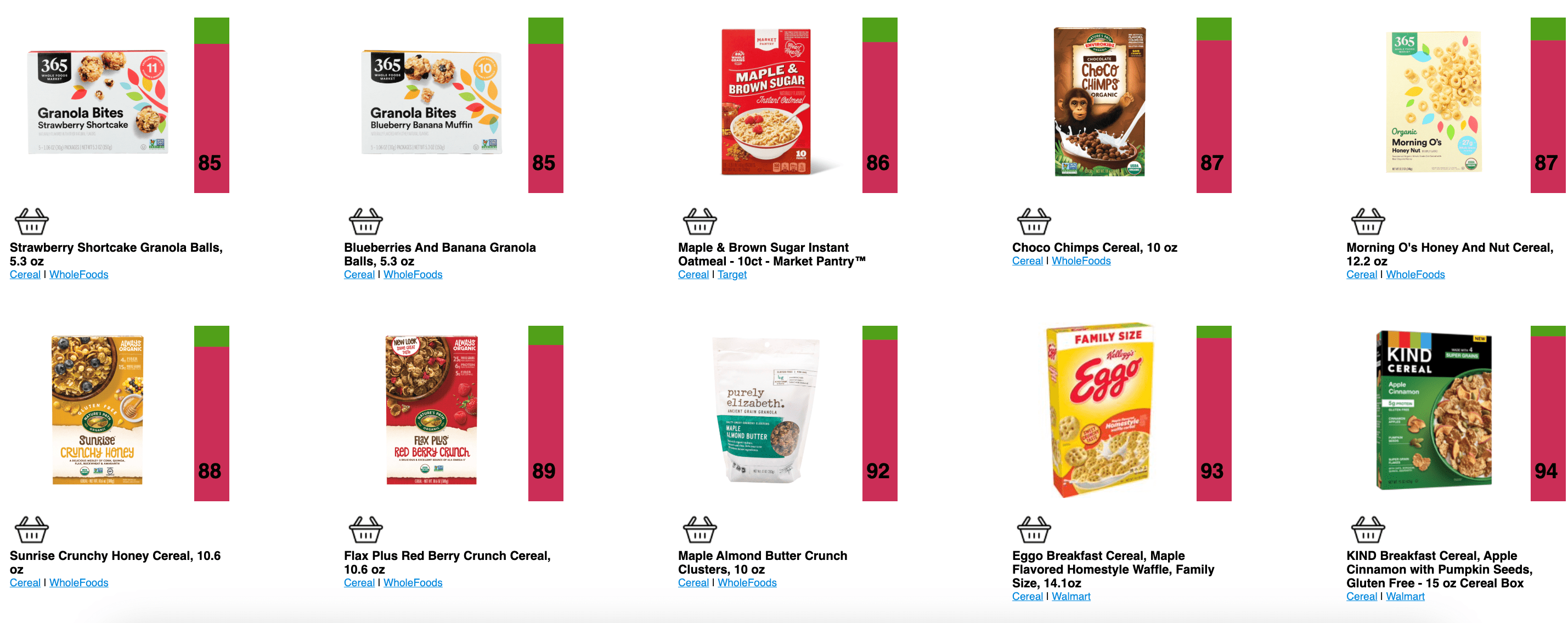New Website Rates 50,000 Processed Foods From Walmart, Target, and Whole Foods

I consider myself a pretty healthy person. I exercise five days a week, keep up with my doctor’s appointments, and maintain a balanced diet full of fruits, veggies, whole grains, and lean protein. But give me a nutrition label to read in the grocery store, and I’m lost. I’m informed enough to know that just because something is marketed as “organic” or “natural” doesn’t mean it’s not full of harmful ingredients. But deciphering those ingredients is like trying to learn a new language in the middle of the grocery store. If you’re at all like me, you’ll be pleased to hear about a new website that catalogs and rates 50,000 processed foods from Walmart, Target, and Whole Foods.
RELATED: Doctors Say to “Avoid These Energy Drinks Like the Plague.”
TrueFood helps people select less processed foods at the grocery store.

TrueFood.tech is a new website that marries scientific research with easy-to-follow grocery shopping guidance.
Researchers at Mass General Brigham just publicized the results of a study that analyzed randomly selected groceries available at Walmart, Target, and Whole Foods to show “the degree of processing of food items and potential alternatives in the surrounding food environment.”
For context, ultra-processed foods have been linked to colon cancer, diabetes, cardiovascular disease, dementia, and more serious health problems.
Published in the journal Nature Foods, the study categorized grocery items by store, food category, and price range, looking at their ingredients and nutrition facts. They next used the FPro algorithm—a machine learning model from a 2023 article in Nature Communications that determines a food’s degree of processing—to assign each food a “processing score,” with a higher number being more processed.
The researchers then took their findings and created a digital database for the general public. It features an image of every food item divided into 42 categories, some of which include:
- Pasta, noodles, and couscous
- Cereal
- Baby food
- Ice cream and dessert
- Dressings
- Chips
- Bread
“There are a lot of mixed messages about what a person should eat. Our work aims to create a sort of translator to help people look at food information in a more digestible way,” said corresponding author Giulia Menichetti, PhD, an investigator in the Channing Division of Network Medicine at Brigham and Women’s Hospital, in a press release. “By creating a system of scoring processed food, consumers don’t have to be overwhelmed with excessive and challenging information to be able to eat healthier.”
RELATED: These Popular Breakfast Foods Could Be Aging You Faster, New Research Shows.
Just how processed are most grocery items?

Unsurprisingly, TrueFood shows that Whole Foods had fewer processed foods than Target and Walmart. But overall, “most of the food these stores sell is ultra-processed,” notes the press release.
In some food categories, there was no non-processed option. Take, for example, cereal. At Whole Foods, the options ranged from minimally processed to ultra-processed. At Target and Walmart, however, all cereals had a high processing score, the release states. The same was true in these categories: soups and stews, yogurt and yogurt drinks, milk and milk substitutes, and cookies and biscuits.
Perhaps most shockingly is how high the processing scores are for many “healthy” brands such as Annie’s, Kind, Yasso, Primal Kitchen, Purely Elizabeth, and Whole Foods’ own 365 brand.
Menichetti says that while she’s glad her research can help people make better informed decisions about what they’re eating, she also hopes it will lead to a larger conversation about ultra-processed foods and how readily available they are.
“Most research activities in nutrition still depend on manual curation, but our study shows that artificial intelligence and data science can be used to scale up,” she shared. “This initiative not only lays the groundwork for similar efforts globally, but also underscores the critical role of open-access, internationally comparable data in advancing global nutrition security with the goal of ensuring that everyone has access to health food options in their daily activities.”
To use the website yourself for your next grocery haul, visit TrueFood.tech.